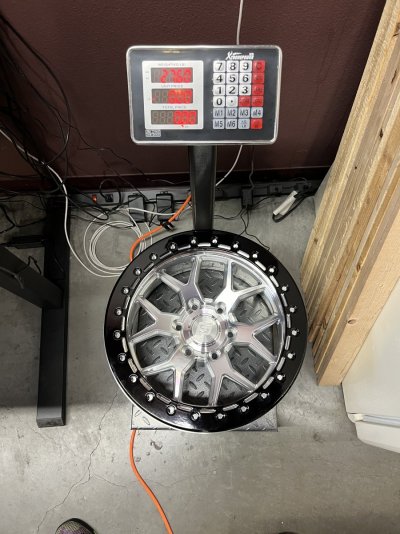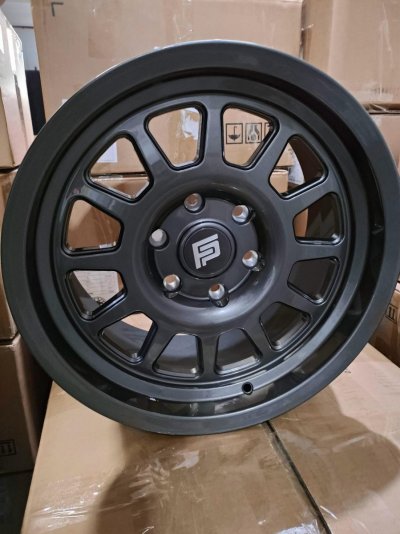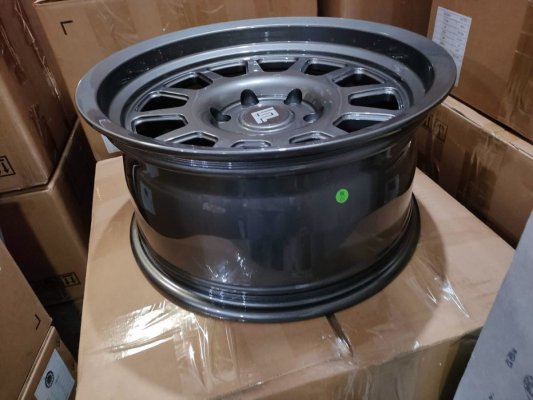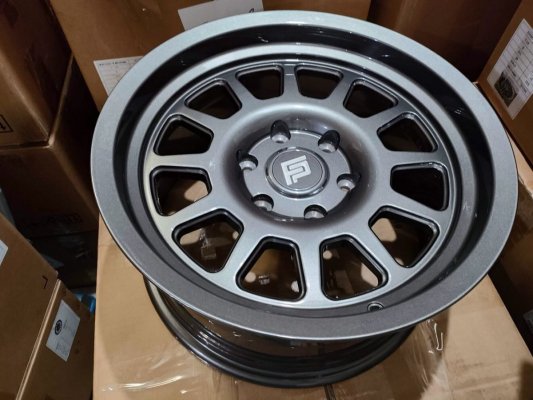Awesome! Did you go with the bead grip wheel or just standard mr703? I was looking at bead grip in this wheel but probably won't do any extreme off roading so not sure it matters.0 offset, sticks out about an inch or so I'd say. Thanks for the compliment on looks
You are using an out of date browser. It may not display this or other websites correctly.
You should upgrade or use an alternative browser.
You should upgrade or use an alternative browser.
GEN 3 Official Aftermarket Wheels Thread
- Thread starter Pacific Wheel
- Start date
Disclaimer: Links on this page pointing to Amazon, eBay and other sites may include affiliate code. If you click them and make a purchase, we may earn a small commission.
- Joined
- Jan 19, 2015
- Posts
- 272
- Reaction score
- 366
It might be beneficial to explain the differences/benefits of "flow formed" vs "cast". That might help people to answer your question.So, here is a question for ya guys (and gals).
I have been designing and importing wheels for 20+ years, and probably 800,000 wheels. I have made wheels in alot of places, using various methods, so I am by far not new to the wheel industry.
For the Raptor and off road crowd what is important to you. Price being equal would you prefer A or B
A. Flow Formed made in Asia. Good Quality.
B. Cast made outside of Asia at a Ford OEM plant on our side of the planet.
Price would be about the same. I can make them cheaper in Asia in regular cast, but I wanted to see how the crowd felt. Always interested in input from members on their preferences. I like to make products that fit right and are what people like, not just an out of the box no thought wheel. Thanks in advance for input.
FmaxTurboSi
Full Access Member
how much do these weigh? i'm assuming they're hub-centric for our trucks? And what offsets are going to be availabe?
TIA
@FmaxTurboSi Per my scale about 28. Yes hub centric. Offsets anywhere between -12 to +12
Attachments
FmaxTurboSi
Full Access Member
@FmaxTurboSi Per my scale about 28. Yes hub centric. Offsets anywhere between -12 to +12
those look great!
Ready to get rid of these yet?My Venomrex VR601BL wheels just arrived, should have them mounted on the truck tomorrow.
Jeff Oldham
Member
Hi,
A quick explanation of types of wheels and how they are built:
1. Cast Wheels. These wheels are typically 356.2 AL wheels. Made by any of the following methods: Gravity / Tilt / Low Pressure / Counter Pressure (square). Porosity listed from highest to lowest in this case.
2. Flow Form. Imagine a potters wheel making a vase from a disk. This is the concept here. The disk at the bottom is the face of the wheel. This disk is normally either Gravity or Low Pressure. The barrel is then flowed out of this. This enables you to have a thinner barrel as it is less porous. This is where you have a weight savings. Some bigger wheels today will flow both sides if there is a huge lip. Porosity on Forged is better than 1 or 2.
3. Forged. This is done out of 6061AL typically and is cnc'd out of a 8,10 or 12K ton forged Disk/Barrel. Some even will forge stamp the design if the quantity is enough. The Better or more Pure AL polishes out better and of course cost more $.
4. Flow Forged. Same basic concept as #2, but the disk is Forged. This gives you an even better barrel than #3.
This is kinda a brief overview. There are other things that go into making a wheel. I have always said you can have a good craftsman doing a gravity cast wheel and a monkey making the low pressure one, and the low pressure one is not as good as the gravity one. Each item above,1-4, also has design advantages and disadvantages.
Most OEM use Low Pressure as the number of units obtained from the core molds is the most cost effective.
We were looking at our full lineup being LP Cast or Flow formed. Honestly Flow Formed on our trucks may be a reach, as its not like the giant 33-37 inch tires are light weight. I also can do Forged on any of our wheel and true bead lock for those that want that added strength/look.
I hope this helps, and am here for those that want to ask questions or of course have comments. Thanks as always in advance for reading and comments.
A quick explanation of types of wheels and how they are built:
1. Cast Wheels. These wheels are typically 356.2 AL wheels. Made by any of the following methods: Gravity / Tilt / Low Pressure / Counter Pressure (square). Porosity listed from highest to lowest in this case.
2. Flow Form. Imagine a potters wheel making a vase from a disk. This is the concept here. The disk at the bottom is the face of the wheel. This disk is normally either Gravity or Low Pressure. The barrel is then flowed out of this. This enables you to have a thinner barrel as it is less porous. This is where you have a weight savings. Some bigger wheels today will flow both sides if there is a huge lip. Porosity on Forged is better than 1 or 2.
3. Forged. This is done out of 6061AL typically and is cnc'd out of a 8,10 or 12K ton forged Disk/Barrel. Some even will forge stamp the design if the quantity is enough. The Better or more Pure AL polishes out better and of course cost more $.
4. Flow Forged. Same basic concept as #2, but the disk is Forged. This gives you an even better barrel than #3.
This is kinda a brief overview. There are other things that go into making a wheel. I have always said you can have a good craftsman doing a gravity cast wheel and a monkey making the low pressure one, and the low pressure one is not as good as the gravity one. Each item above,1-4, also has design advantages and disadvantages.
Most OEM use Low Pressure as the number of units obtained from the core molds is the most cost effective.
We were looking at our full lineup being LP Cast or Flow formed. Honestly Flow Formed on our trucks may be a reach, as its not like the giant 33-37 inch tires are light weight. I also can do Forged on any of our wheel and true bead lock for those that want that added strength/look.
I hope this helps, and am here for those that want to ask questions or of course have comments. Thanks as always in advance for reading and comments.
ksgries
Active Member
Anyone have antimatter blue with method 703 in titanium?
tcm glx
Full Access Member
ErixRaptor
Member
Are those FP wheels
are these the glossy grey?Super pumped about this setup. Worked with FP Forged on a 17x8.5 +12 Can’t wait to slap these on my Gen 3!
View attachment 453049
Similar threads
- Replies
- 2
- Views
- 607
- Replies
- 8
- Views
- 719
- Replies
- 2
- Views
- 1K
- Replies
- 0
- Views
- 707





